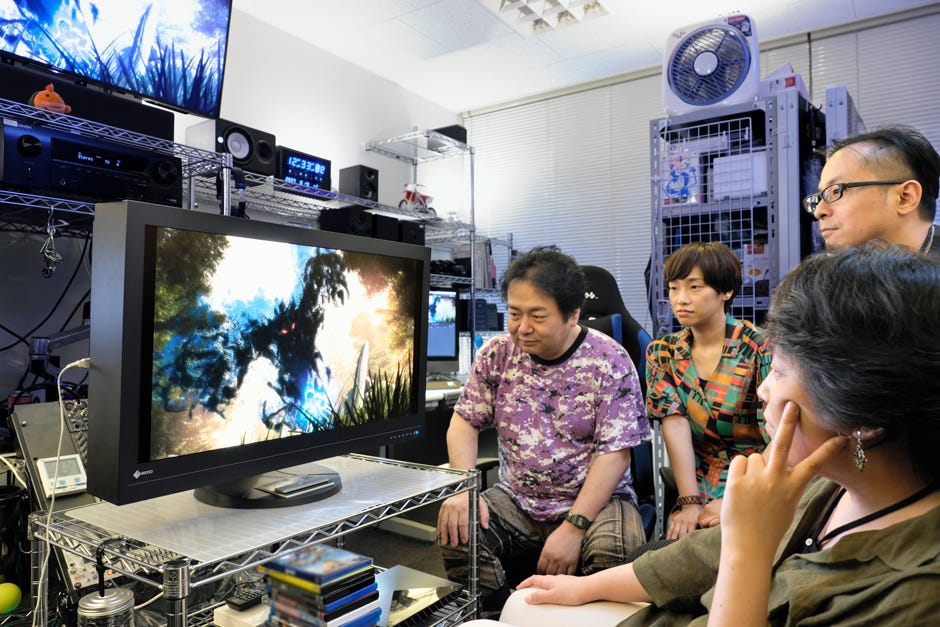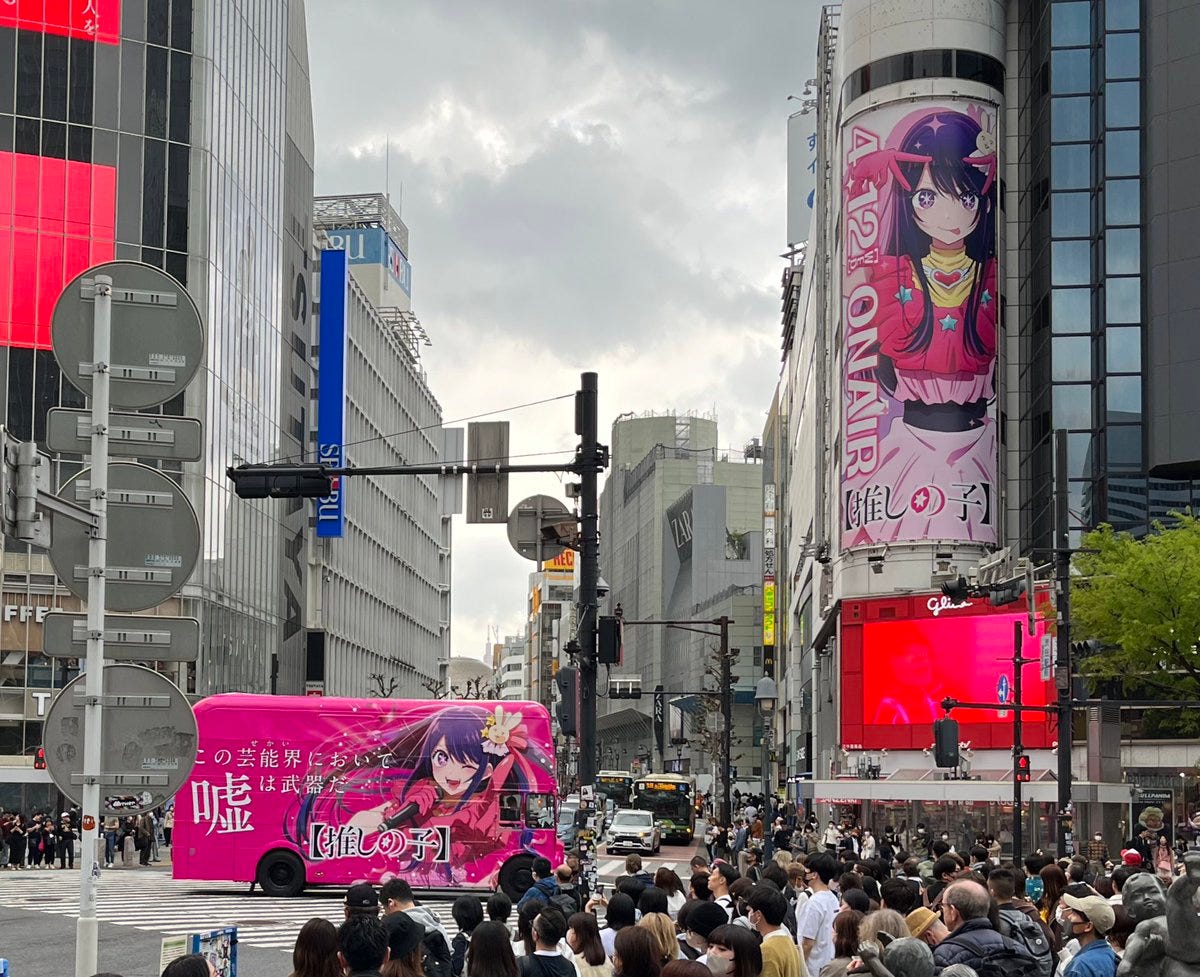Netflix's shifting anime portfolio strategy
Plus: Aging readership in manga; Record growth for Japan's toy industry; Idol anime's marketing for young female viewers; and more
This is your weekly Animenomics briefing, covering the business of anime and manga. Today is Wednesday, June 14, 2023.
In case you missed it: The Annecy International Animation Film Festival opened on Monday. Keiichi Hara’s Lonely Castle in the Mirror and Tomohisa Taguchi’s The Tunnel to Summer, the Exit of Goodbyes are competing for the top honor.
Mixed results at Netflix prompt anime strategy shift

After years of courting the anime industry for direct relationships with studios, Netflix is shifting its focus away from exclusive and original anime content and toward partnerships.
Driving the story: One year after Netflix reported subscriber losses for the first time in 10 years, anime production studios are re-evaluating their relationships with the streaming content provider, Weekly Toyo Keizai reports.
Backgrounder: Netflix paid anime studios two to three times the average rate to produce exclusive and original titles when it first entered the industry.
Some in the industry were hopeful that Netflix’s production model would lead to better working conditions for animators.
For content providers, exclusivity creates differentiation from other services and drives subscription growth.
Reality check: The anime business isn’t designed for exclusivity. Anime titles are produced with tie-ins to manga, merchandise, and other products, and exclusivity makes it harder for an anime to become a hit.
Tiger & Bunny’s popularity in 2011 resulted in high merchandise sales and subsequent film productions, but last year’s sequel Tiger & Bunny 2 debuted exclusively on Netflix and had lackluster performance.
“There are anime exclusively distributed by Netflix that don’t get much attention at the time of release, but they get a good response when they air on TV a few years later,” one anime studio executive told Toyo Keizai last year.
Bottom line: Predicting whether original works like Eden, billed as the first anime entirely planned by Netflix, will become hits is very difficult.
What they’re saying: Netflix chief anime producer Taiki Sakurai says moving forward it will focus on funding anime projects that are more likely to become hits rather than giving creators free rein to experiment.
Yes, but: Sakurai, who led Netflix’s entry into anime, also told Toyo Keizai that he may be leaving the company soon, leaving the current content direction in uncertainty.
As Japan’s population ages, so does manga readership

Manga titles published in magazines that are traditionally marketed to teenage boys occupy the top five positions in an Oricon semiannual survey of physical manga sales between December 2022 and May 2023.
Why it matters: Boys’ manga, also called shonen manga, continue to outsell other demographics today despite the share of population under the age of 15 steadily declining since the 1980s, according to Nikkei xTREND.
By the numbers: Blue Lock, published in Kodansha’s Weekly Shonen Magazine, sold more than 8 million copies over a six-month period, Oricon reports.
Chainsaw Man, Slam Dunk, Jujutsu Kaisen, and One Piece—all published in Shueisha’s Weekly Shonen Jump magazine—took second to fourth places.
Expectation vs. reality: Conventional wisdom dictates that the market share of manga for young people would decline as the country’s population grows older, but this isn’t happening.
In the first three months of 2016, total circulation of boys’ manga magazines was almost even with that of men’s, girls’, and women’s magazines combined, according to Japan Magazine Publishers Association data.
Over the same period in 2023, however, boys’ manga magazines exceeded the circulation of other demographics by more than 16 percent, Animenomics found, meaning their market share has grown.
What’s happening: Anime adapted from boys’ manga titles for television and film, which aren’t bound by the publishing industry’s demographic categories, have performed very well over the last several years, benefiting publishers.
A study by the Hakuhodo Institute of Life and Living think tank also found that older readers are the fastest growing demographic of manga app users.
Smartphone usage data shows that older adults in their 40s and 50s make up one-fifth of manga app users in 2016. By 2022, that proportion has doubled to more than 41 percent.
Clippings: Japanese toy industry climbs to record high

Japan’s domestic toy market grew 6.7 percent last year to more than ¥950 billion (US$6.8 billion), according to new data from the Japan Toy Association. Trading card games, like Pokémon and One Piece, grew 32 percent and were the primary drivers of the industry’s growth. (Animation Business Journal)
Kyoto Animation’s merchandise store is partnering with Tokyo-based package forwarding service WorldShopping Biz to ship international orders. In addition, the company is closing its own international shipping service that opened in 2018 for customers based in the United States. (Press release)
Stage production company Nelke Planning, which created popular live-action musical adaptations of The Prince of Tennis, Attack on Titan, and Sailor Moon, has been acquired by Cygames parent CyberAgent. Overseas expansion is planned for the business. (CNET Japan)
CloverWorks animator PCs need more RAM than ever
“It seems that the company’s policy is that there is no point in cutting the cost of equipment to sacrifice work efficiency for creators.”
— Taichi Kurasawa, operations manager overseeing systems management at CloverWorks
Context: In an interview with CGWORLD magazine, Kurasawa highlights a rising need at anime studio CloverWorks to increase the memory size of desktop computers used by animators from 16 GB to 32 GB. The need comes from the increasing number of image layers used for animation and a preference toward using PureRef, which consumes a lot of memory, to view reference materials.
‘Oshi no Ko’ draws male readers, but female viewers

Spring 2023 anime season’s surprise hit Oshi no Ko has climbed to the number two spot on a weekly survey of Japan’s most watched streaming contents. This places the series just behind Demon Slayer: Swordsmith Village Arc in terms of viewership.
Driving the story: Oshi no Ko’s male-to-female viewership ratio on domestic video streaming platforms has swung between 50:50 and 40:60 since it began airing in April, according to marketing research firm GEM Partners.
Viewers in their 20s form the largest age demographic for the series.
Why it matters: Contrary to the anime, the original manga is published in Weekly Young Jump magazine, which is traditionally targeted at a male readership. The magazine’s smartphone app, for instance, has twice as many male users as female ones.
How it happened: One factor differentiating the anime and the manga, which depict Japan’s pop idol industry, is marketing strategy.
Days before Oshi no Ko began airing, billboard advertisements and video promos on jumbotron screens blanketed Shibuya, which has many stores and trendy cafes drawing young female customers to the area.
The anime is also popular on TikTok, with millions of views on videos posted to the official account. Last week, the series was nominated for the social media network’s awards for trending content in the first half of the year.
Music from the series remains popular, with the opening theme song by YOASOBI staying on top of Billboard’s Japan Hot 100 chart for eight straight weeks. The musical duo is popular with younger listeners.
Bottom line: Writing for Weekly Toyo Keizai, gender scholar Renge Jibu says, “Not only is [Oshi no Ko] entertaining, but it also portrays important scenes in a casual manner and with respect for gender perspectives and children’s human rights.”
Thanks for reading this week’s newsletter. Do you know a friend who watches anime and reads manga? Forward them this newsletter for current insights on the industry.



Thank you for this Substack. STOKED to have found you via Animation Obsessive.